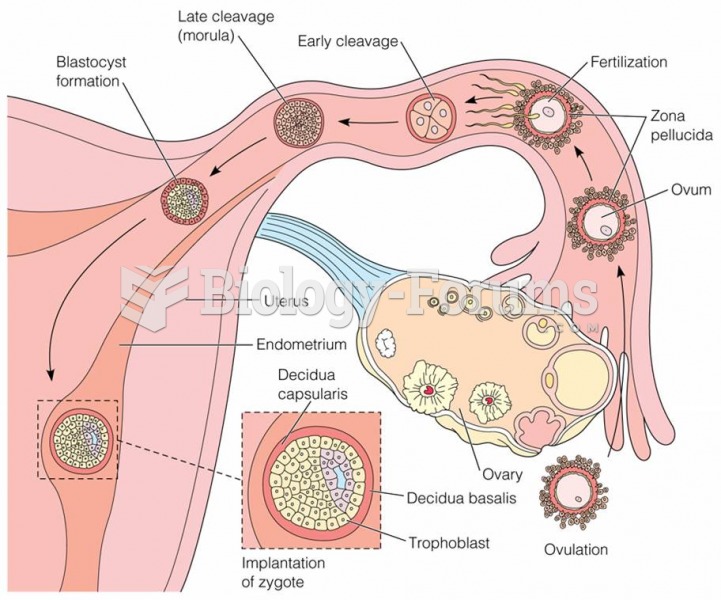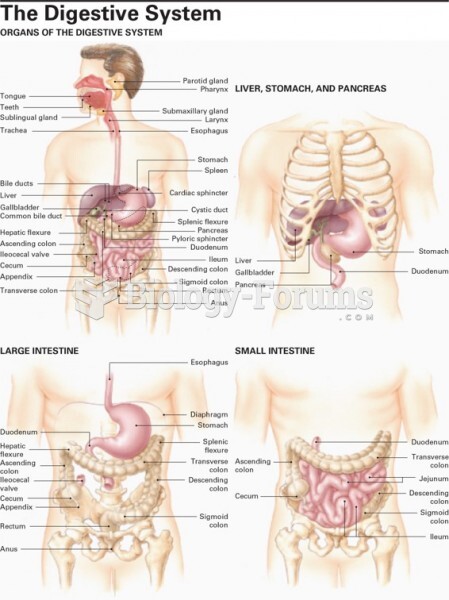Answer to Question 1
Accessory organs are organs that are not part of the digestive tract but assist with the process of digestion. Organs such as the salivary glands, liver, gallbladder, and pancreas are not part of the digestive tract. Rather, these organs are referred to as accessory organs, and they play an important role in the process of digestion. Together, the gastrointestinal tract and accessory organs carry out three important functions:1. Digestion: It is the physical and chemical breakdown of food into a form that allows nutrients to be absorbed.2. Absorption: It is the movement of nutrients out of the gastrointestinal tract into the blood or lymph.3. Elimination: It is the process whereby solid waste is removed from the body.The presence of food in the mouth stimulates the release of saliva from the salivary glands. As food is broken apart, it mixes with saliva, making the food moist and easier to swallow. This also allows the digestive enzymes in saliva to begin the process of chemical digestion of carbohydrates and lipids while they are still in the mouth.The pancreas plays many important roles in digestion. It protects the small intestine from the acidity of chyme and it also supplies various enzymes necessary for digestion. The arrival of chyme in the small intestine stimulates the pancreas to release pancreatic juice, a mixture of water, bicarbonate, and enzymes. Pancreatic juice is released into a duct that empties directly into the upper region (duodenum) of the small intestine. Being a particularly strong base, the bicarbonate quickly neutralizes the acidic chyme as it enters the duodenum. Another fluid that plays an important role in digestion-especially when fatty foods are consumed-is bile. Although bile is produced in the liver, it is stored in the gallbladder for quick release into the small intestine. When high-fat foods are consumed, the gallbladder releases bile, which acts like a detergent. Bile causes large globules of fat to disperse into smaller fat droplets that are easier to digest. This process, called emulsification, enables fats and water to form a smooth mixture. Upon absorption, water-soluble nutrients enter the bloodstream through the capillaries contained within each villus. Once they reach the bloodstream, water-soluble nutrients circulate directly to the liver, giving it first access to the nutrient-rich blood as it leaves the small intestine. The liver then regulates the use of the nutrients to suit the body's needs.
Answer to Question 2
The stomach is uniquely equipped to carry out two important digestive functions: (1 ) mixing food with the gastric secretions that aid in chemical digestion and (2 ) temporarily storing food. Specialized cells in the lining of the stomach produce a variety of substances that aid in the process of digestion. These digestive secretions, collectively referred to as gastric juice, consist mainly of water, hydrochloric acid, digestive enzymes, mucus, and intrinsic factor, a protein that is essential to vitamin B12absorption.In the stomach, muscular contractions mix food with gastric juice, causing the chemical and physical breakdown of food into chyme. The presence of food in the stomach stimulates the release of a hormone called gastrin, which is produced by special cells in the stomach's lining. Gastrin stimulates the release of gastric juice and causes the muscular wall of the stomach to contract vigorously. These powerful muscular contractions, much like the action of kneading bread, force the bolus to mix with the acidic gastric juice. Within 3 to 5 hours after eating a meal, the partially digested food is mixed thoroughly with the gastric juice. By the time the bolus leaves the stomach, it has been transformed into a semi-liquid paste called chyme.It is important that all the digestive events that are supposed to occur in the stomach do so before chyme enters the small intestine. To make sure that this happens, the stomach serves as a temporary storage facility. As your stomach fills with food, its walls expand. This stretching triggers a neural response, signaling the brain that the stomach is becoming full. In turn, the brain sends a signal that hunger has been satisfied, causing a person to stop eating. Feeling this sensation of fullness is an important aspect of regulating food intake. The pyloric sphincter, located at the base of the stomach, regulates the flow of chyme into the small intestine.







